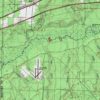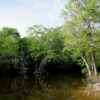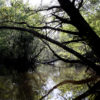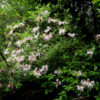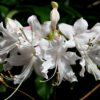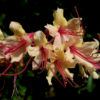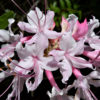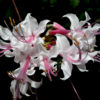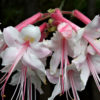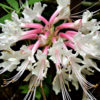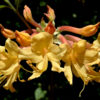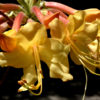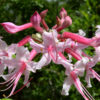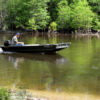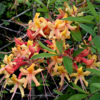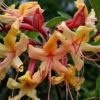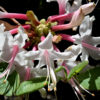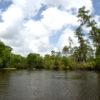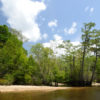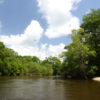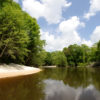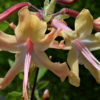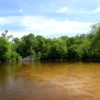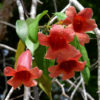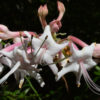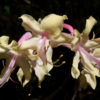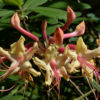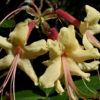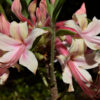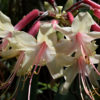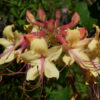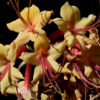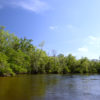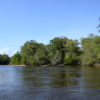We define the “middle Yellow River” as the section of the Yellow River beginning at about the Santa Rosa-Okaloosa County line and extending to the confluence with the Shoal River. On this section of the river, an interesting transformation is taking place with R. austrinum. While the plants still bloom almost exclusively white to pink between Garnier Landing (near the county line) and about the elevation of the hamlet of Holt (we know of only one yellow-flowered plant in this section), this changes dramatically between Holt and the confluence with the Shoal River. The further upstream you go, the more yellow tones appear until you finally see a colorful jumble in which some flowers can no longer be clearly assigned to one (white/pink) or the other (yellow/orange) color spectrum. North of the confluence (along the upper Yellow River), yellow colors tend to dominate, although pink flowers can still be found here. Many years ago, when Ron Miller thought that R. austrinum and R. canescens hybridized just ahead of the Shoal River, he coined the term “hybrid zone” for this section of the river. Today, we don’t like to use that term as much, since we know that all these colorful plants are tetraploid (=R. austrinum). The coloration seems to be influenced by the annual average acidity of the river and its average amount of sediment: the more acidic and clear, the more likely white to pink; the less acidic and the more sediment, the more likely yellow to orange. The idea is, that at the confluence with the Shoal River the different waters mix and apparently form some sort of “mean”. Thus both forms of R. austrinum can apparently exist equally well and therefore naturally form intermediate forms. The color variety here is reminiscent of that of the Escambia River, but comes nowhere near it.
All Rhododendron shown here are R. austrinum. This is why I abstain from captions in these cases.

